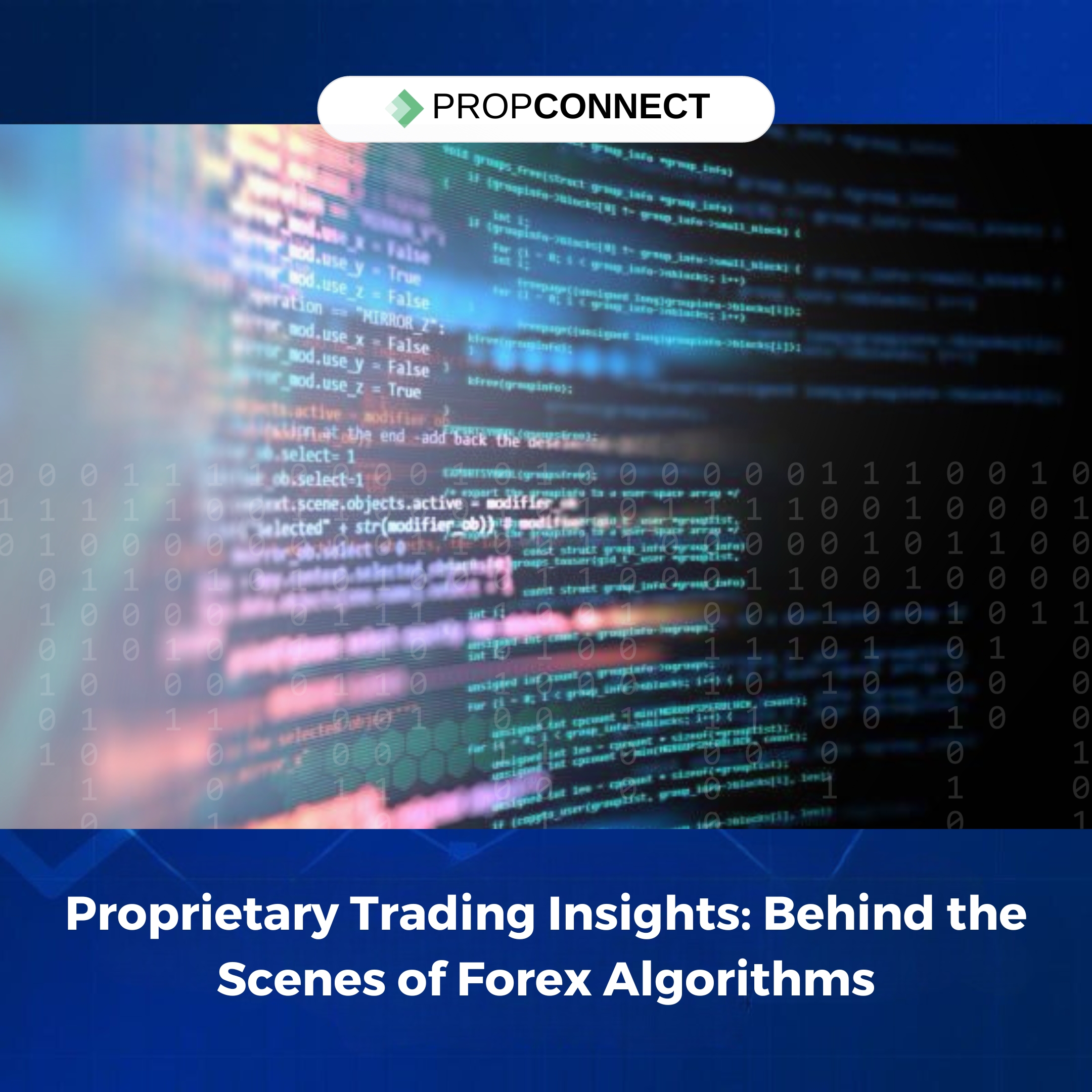Articles
Proprietary Trading Insights: Behind the Scenes of Forex Algorithms
Forex algorithms are at the forefront of trading methods employed by proprietary trading firms as they continue to push the frontiers of technological innovation. Proprietary traders are able to precisely and nimbly negotiate the intricacies of the Forex market because of the integration of quantitative analysis, machine learning, and risk management within these algorithms.

Proprietary trading companies are increasingly using cutting-edge technology and complex algorithms to obtain a competitive edge in the always-changing financial markets. In the world of foreign currency trading, proprietary traders are using state-of-the-art algorithms to negotiate the intricacies of the market. This essay examines the complexities of the Forex algorithms that underpin trading techniques and offers insights into the realm of proprietary trading.
Trading with Algorithms in Proprietary Trading: In proprietary trading, businesses participate in the financial markets with their own funds, and one of the main tenets of their approaches is algorithmic trading. Because it is a very liquid and decentralized market, forex lends itself particularly well to algorithmic trading, which allows for quick trade execution and dynamic market adjustments.
Automated Decision-Making: Forex algorithms are made to examine enormous volumes of market data, spot trends, and place trades in accordance with preset parameters. Proprietary traders can react quickly to changes in the market, seize opportunities, and instantly manage risks thanks to automated decision-making.
Quantitative Analysis: The creation of Forex algorithms heavily relies on quantitative analysis. Businesses engaged in proprietary trading employ quantitative analysis to create models that combine statistical patterns, technical cues, and historical data. Algorithmic techniques that try to forecast price movements and market trends are based on these models.
High-frequency trading, or HFT, is a subset of algorithmic trading that stands out for its ability to quickly execute multiple orders. HFT algorithms take advantage of minute price differences in the forex market to profit from inefficiencies in the market and price differences that last only a few microseconds.
Artificial Intelligence and Machine Learning: Proprietary trading firms are integrating artificial intelligence and machine learning with forex algorithms. With the help of these technologies, algorithms may adjust to changing conditions and gain knowledge from fresh data, improving their capacity to identify trends, anticipate outcomes, and gradually improve trading tactics.
Integrated Risk Management: Forex algorithms incorporate advanced risk management techniques in addition to their ability to spot lucrative deals. These algorithms employ various risk mitigation techniques, such as automatically adjusting position sizes and setting stop-loss levels, in order to safeguard capital and maintain a disciplined trading style.
Statistical arbitrage: is a common practice used by forex algorithms to take advantage of brief price differences between currency pairs. Algorithms that examine past correlations and aberrations can spot profitable opportunities when markets return to historical norms or mean values.
Techniques for Providing Liquidity: To improve market liquidity, proprietary traders utilizing Forex algorithms may use techniques for providing liquidity. Algorithms add to market depth and may obtain rebates from exchanges, offsetting trading expenses by placing a large number of orders at various price points.
Algorithms for Execution: Algorithms for execution concentrate on maximizing the cost and timing of order execution. Particularly in the fast-paced world of Forex trading, proprietary trading firms use these algorithms to reduce slippage, lessen market impact, and ensure effective order routing.
Continuous Optimization and Adaptation: Successful proprietary trading algorithms are ones that can adjust to shifting circumstances, as the Forex market is a dynamic environment. Algorithms must be updated and optimized on a regular basis to be effective in changing market conditions.
In conclusion, Forex algorithms are at the forefront of trading methods employed by proprietary trading firms as they continue to push the frontiers of technological innovation. Proprietary traders are able to precisely and nimbly negotiate the intricacies of the Forex market because of the integration of quantitative analysis, machine learning, and risk management within these algorithms. The insights gleaned from studying the inner workings of Forex algorithms will probably continue to influence proprietary trading as the financial landscape changes, presenting fresh chances and difficulties for individuals at the vanguard of this technical frontier.


